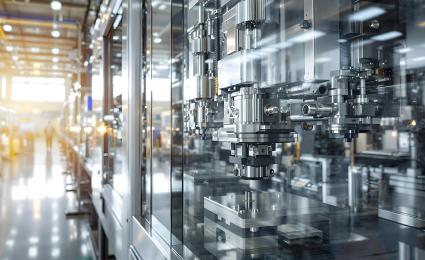Our annual report on the capital goods industry finds that profits rose slightly despite declining growth, with the US remaining a bright spot.


Industrial Automation in the U.S.: Ready for a smart comeback
By Eymeric Boyer and Sebastian Koper
After a short breather, robust growth should return and remain through 2030
After years of rapid expansion, the industrial automation sector has hit a speed bump in 2024 which will continue in 2025. A cooling investment climate, supply chain recalibrations, and shifting global priorities have slowed the industry’s momentum—but thankfully not for too long. While 2025 is poised to be a year of relative limited growth, a resurgence is already taking shape, promising renewed growth, driven by innovation, digital transformation, and sector-specific tailwinds.
Which industries will lead the charge? Where will investment flow? And how should industrial automation players navigate the challenges of the present to capitalize on the opportunities of the future? This article dives into the data, forecasts key market shifts, and reveals how companies can position themselves for success in the years ahead.
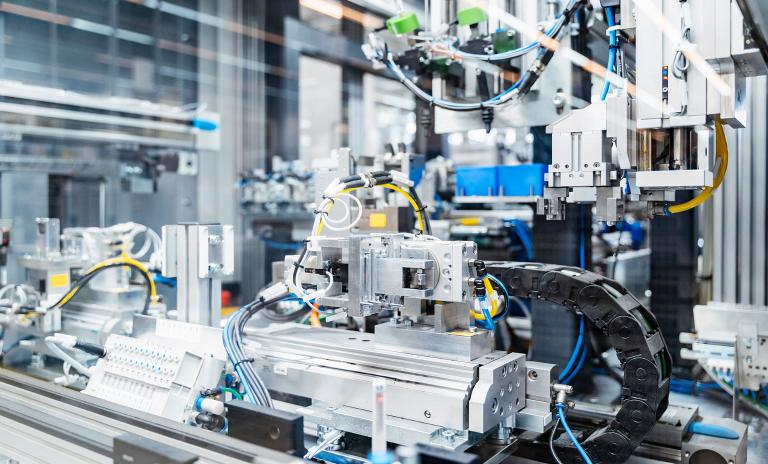
Given the wide-ranging nature of the market we are examining, it is only to be expected that the outlook will vary significantly for the various links in the value chain, as it will for different end-markets and different regions. The comparative short-term and long-term prospects for both geographical regions and specific sectors of industry are discussed below.
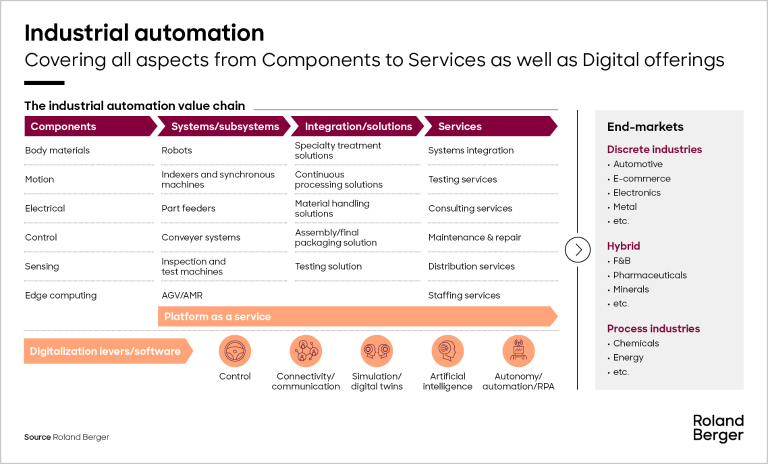
The below chart essentially reflects a classic V-shaped development, bottoming out across all segments in 2025. One key reason for sluggish growth this year is that many companies in key end-markets are currently scaling back or halting capital expenditures. Another is that component inventories are already well stocked due to a “bullwhip effect” in the wake of past material shortages.
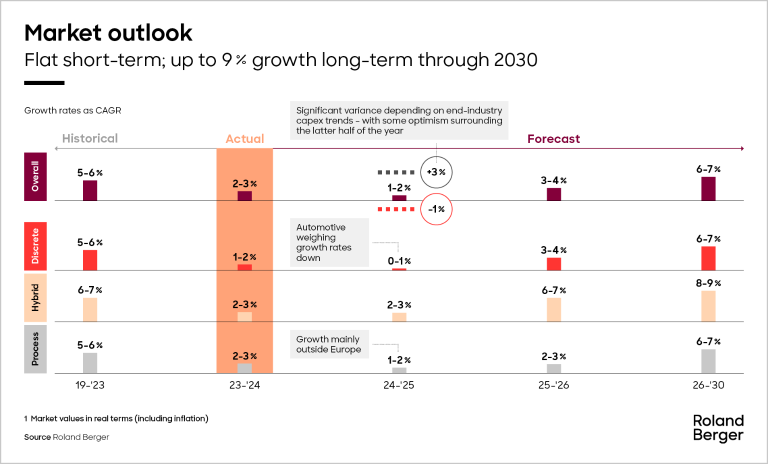
"With key end markets deferring capex and destocking continuing, 2025 presents a more muted outlook for industrial automation growth. However, underlying drivers like efficiency needs and emerging technologies still point towards future momentum beyond this period of adjustment."
After experiencing slowed growth rates in 2023 and 2024, the outlook for discrete industries is relatively flat in 2025, but should pick up noticeably in the coming years. By contrast, hybrid industries are outpacing both discrete and process industries: Largely due to strong market developments in pharmaceuticals and medical technology (MedTech) as well as food & beverage, compound annual growth rates (CAGR) of up to 9% are projected through the end of the decade.
Although medium-term growth in process automation is slated to be lower, at 6 to 7%, it should be remembered that process industries account for roughly 60% of the overall market.
Beyond 2025, the outlook for growth is positive across virtually all segments of industrial automation through the end of the decade. The pharmaceutical and MedTech industries will lead the way together with Battery/ex-EV followed by food & beverage, electronics (including data centers) and the mining and metals sector. With the exception of automotive engineering and certain process industries, the current lull should be short-lived, followed by moderate to strong growth between 2026 and 2030.
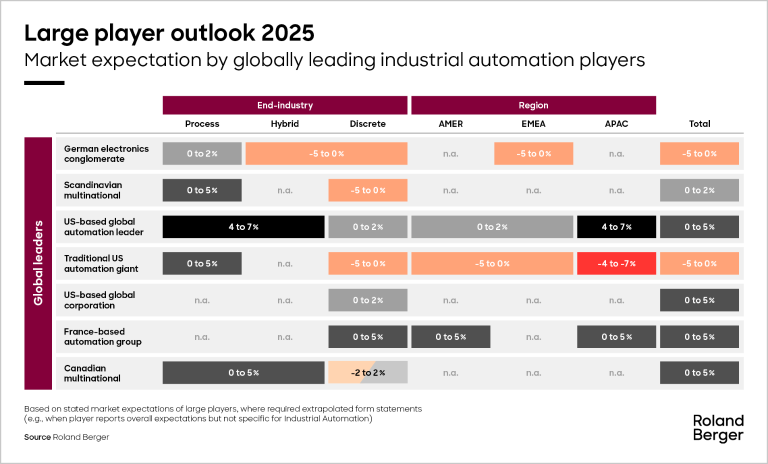
The Asia Pacific region will witness the most forceful expansion, followed by North America, while Europe looks set to miss out on the kind of growth all other regions will experience. Especially in the sizable process automation sector, most growth will take place outside Europe.
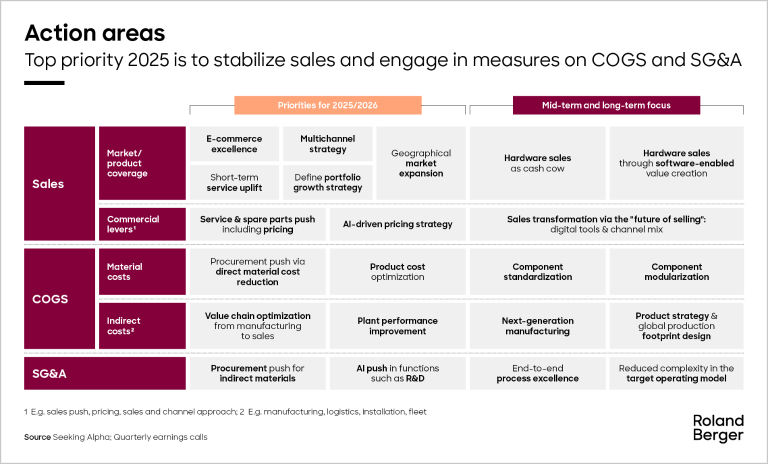
The above chart tells a somewhat muted outlook by market participants: Around the globe, even the industry’s largest companies are generally cautious in their growth forecasts for this year. One US-based player stands out by venturing to predict up to 7% growth in some industries and in the Asia Pacific region for their addressed markets. Other than that, however, most expectations are firmly anchored in the 0 to 5% range. Some – especially the top two European automation players – are not even sure of this modest goal.
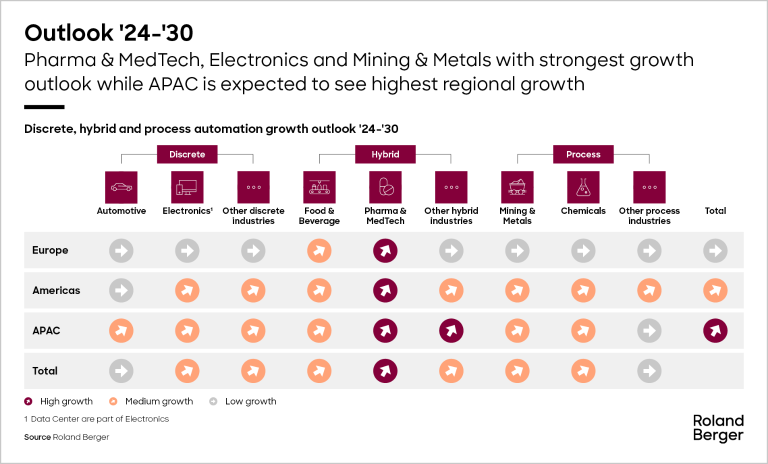
Within North America, the robotics, and overall industrial automation market, has seen some top-line challenges in the last several years. The discrete end markets have been hit particularly hard as buildout in these sectors has slowed, and in some cases, reversed. The near- to mid-term outlook however is strong, driven by a confluence of factors including aggressive reshoring initiatives, significant manufacturing investments, and strategic government support aimed at decoupling from China.
Companies are increasingly bringing production back to the U.S. or nearshoring to mitigate supply chain risks exposed by recent global disruptions and geopolitical tensions. This movement is particularly pronounced in critical sectors like semiconductors, electric vehicles, clean energy, aerospace, and pharmaceuticals, all of which are major adopters of advanced automation. Federal acts like the CHIPS and Science Act, the Inflation Reduction Act, and the Bipartisan Infrastructure Law are injecting hundreds of billions of dollars into domestic manufacturing, creating powerful tailwinds for automation adoption.
This surge in domestic manufacturing will fuel a robust demand for industrial robots, AI-driven systems, IoT solutions, and advanced control systems, despite potential short-term uncertainties from new tariff policies. The industry is poised for significant growth, with a focus on smart factories, digital transformation, and the development of a skilled workforce to operate these advanced technologies. Companies keen to seize the attractive opportunities that lie ahead must therefore act now to lay a firm and healthy foundation on which to profitably move forward.
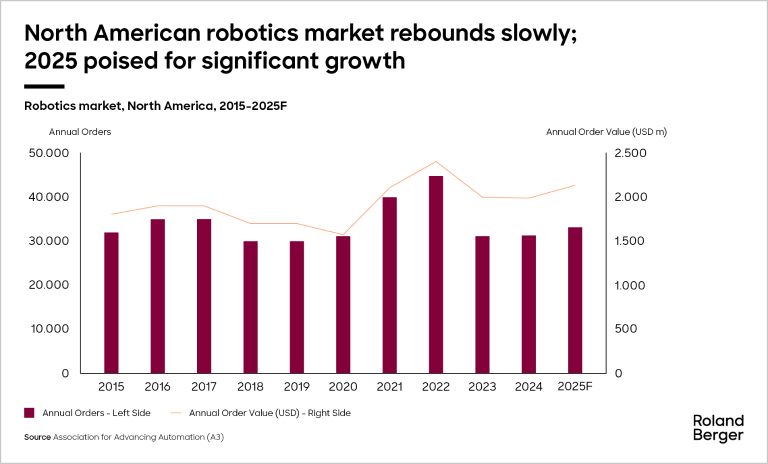
"We're seeing an unprecedented convergence of geopolitical shifts and government incentives, making advanced automation not just a competitive edge, but a strategic imperative for U.S. manufacturing."
As growth remains meager through the end of 2025, the first priority should be to stabilize sales by optimizing sales strategies, delivering excellence in e-commerce in particular and, where possible, preparing the ground for geographical market expansion. At the same time, short-term commercial levers such as the sale of services and spare parts must be activated. In addition, it is important to flesh out an AI-driven pricing strategy.
Looking further ahead, hardware sales can continue to serve as a “cash cow” while software is deployed to add value. Meanwhile, sales must be transformed towards a digital and multichannel focus.
The cost of goods sold (COGS) can be enhanced by targeting material expenses, i.e. reducing direct costs by optimizing product costs. On the other hand, value chains must be optimized and plant performance improved in order to lower indirect costs.
With the longer-term in mind, the focus can then shift to standardizing and modularizing components, preparing for next-generation manufacturing and realigning each company’s product strategy and global production footprint design.
Lastly, selling, general and administrative expenses (SG&A) must be improved in the short-term by streamlining the procurement of indirect materials and actively driving forward the deployment of AI in functions such as R&D. At the same time, end-to-end process excellence and less complex target operating models will stand any company in good stead as growth returns in the medium to long term.


